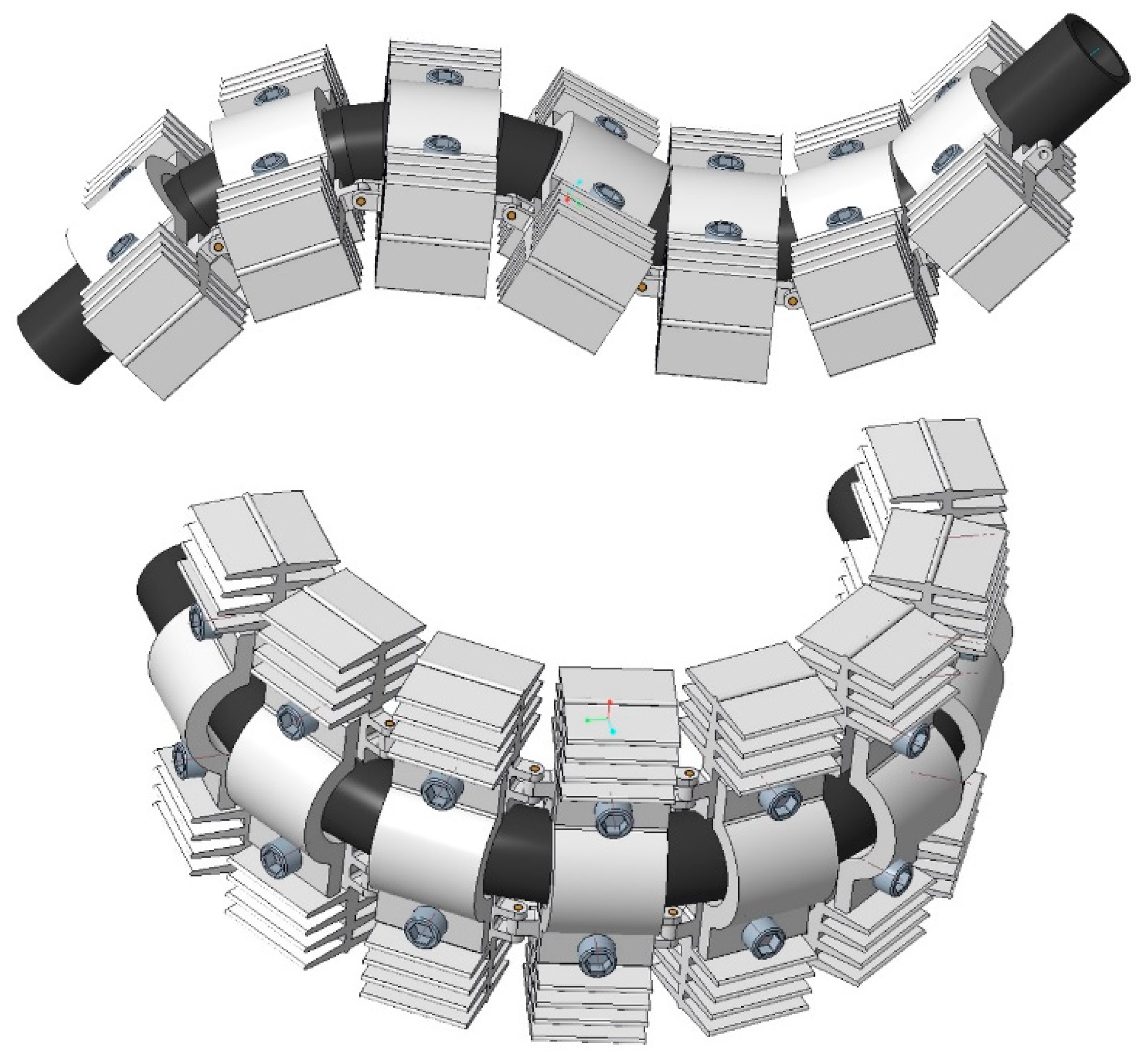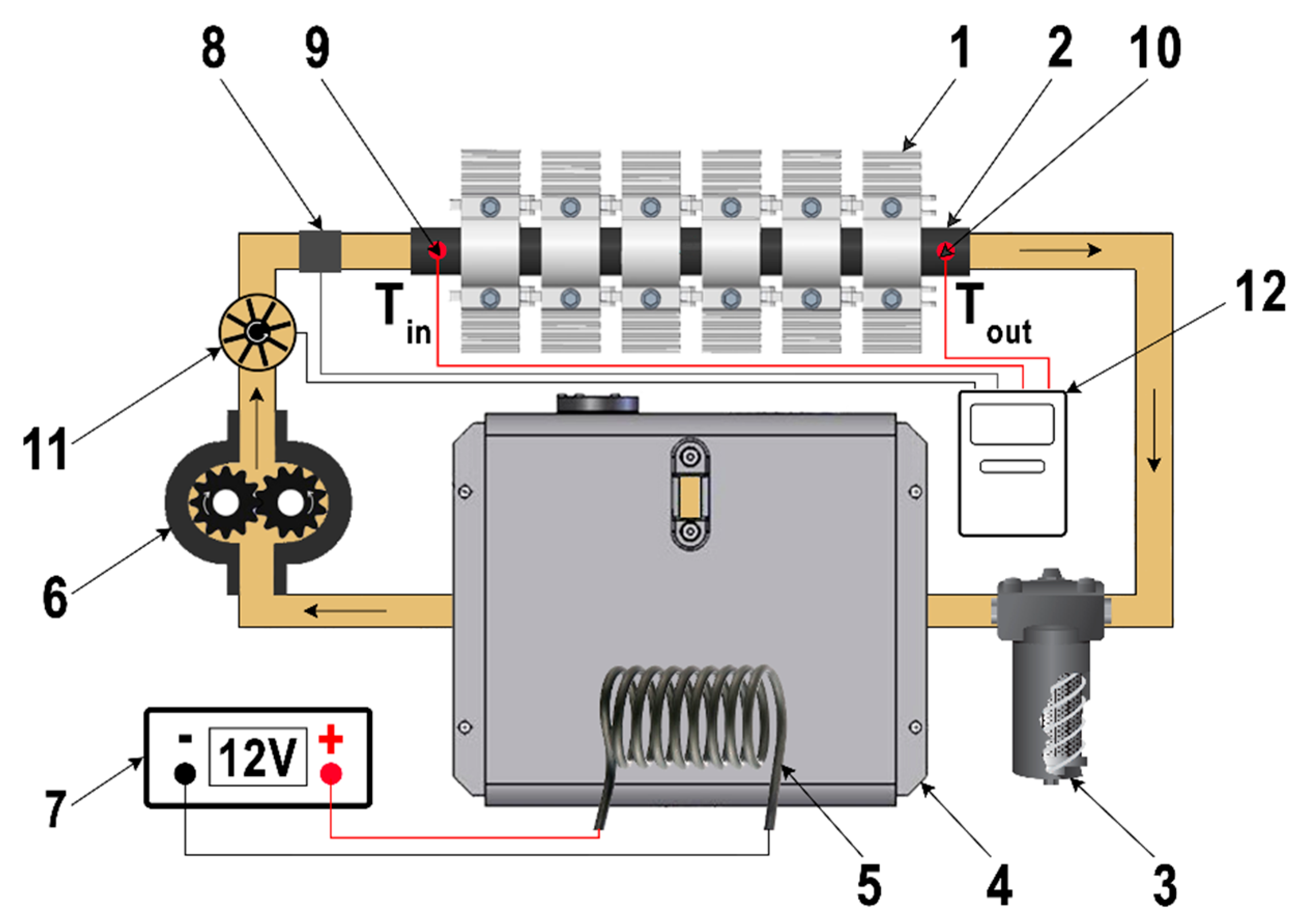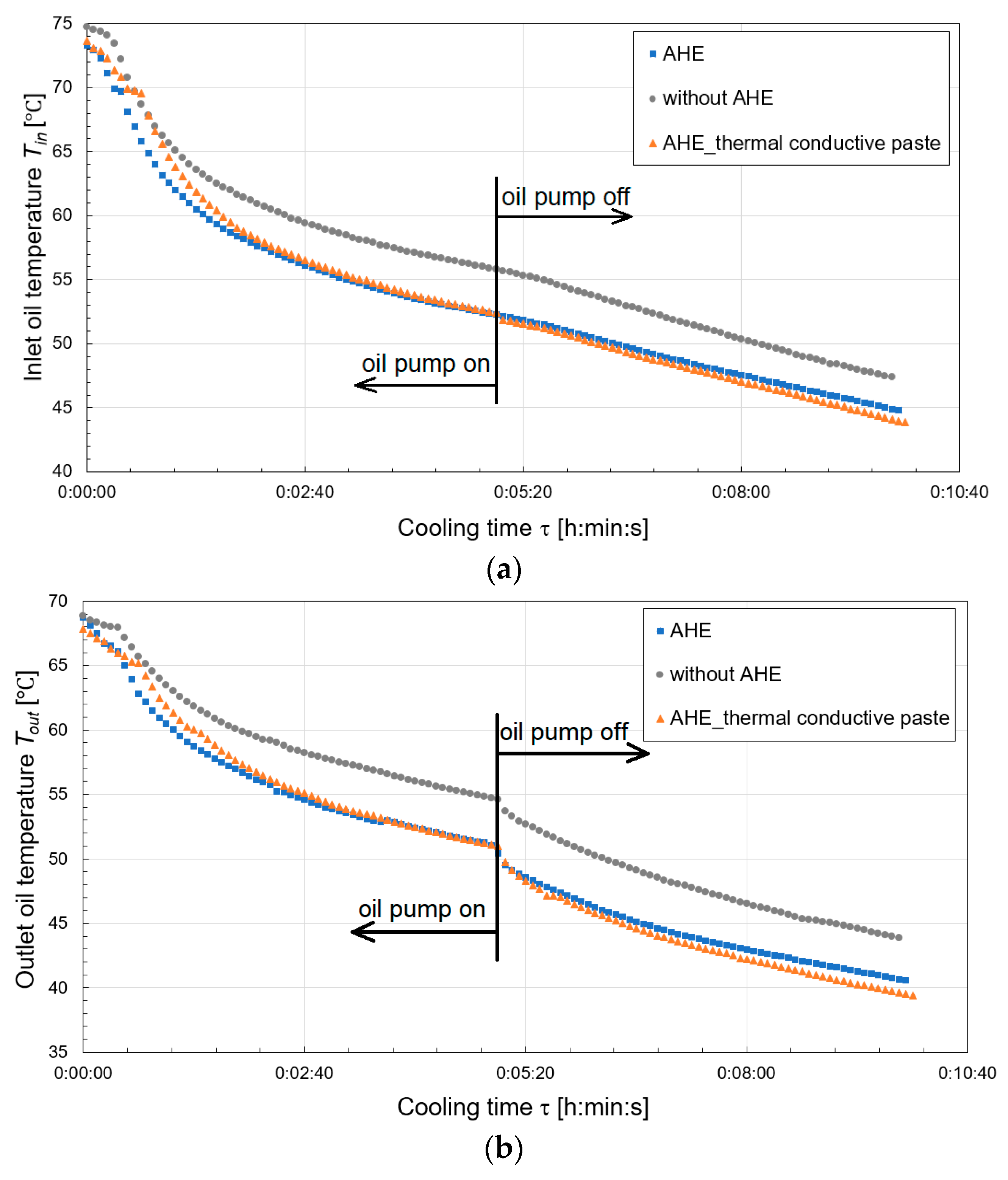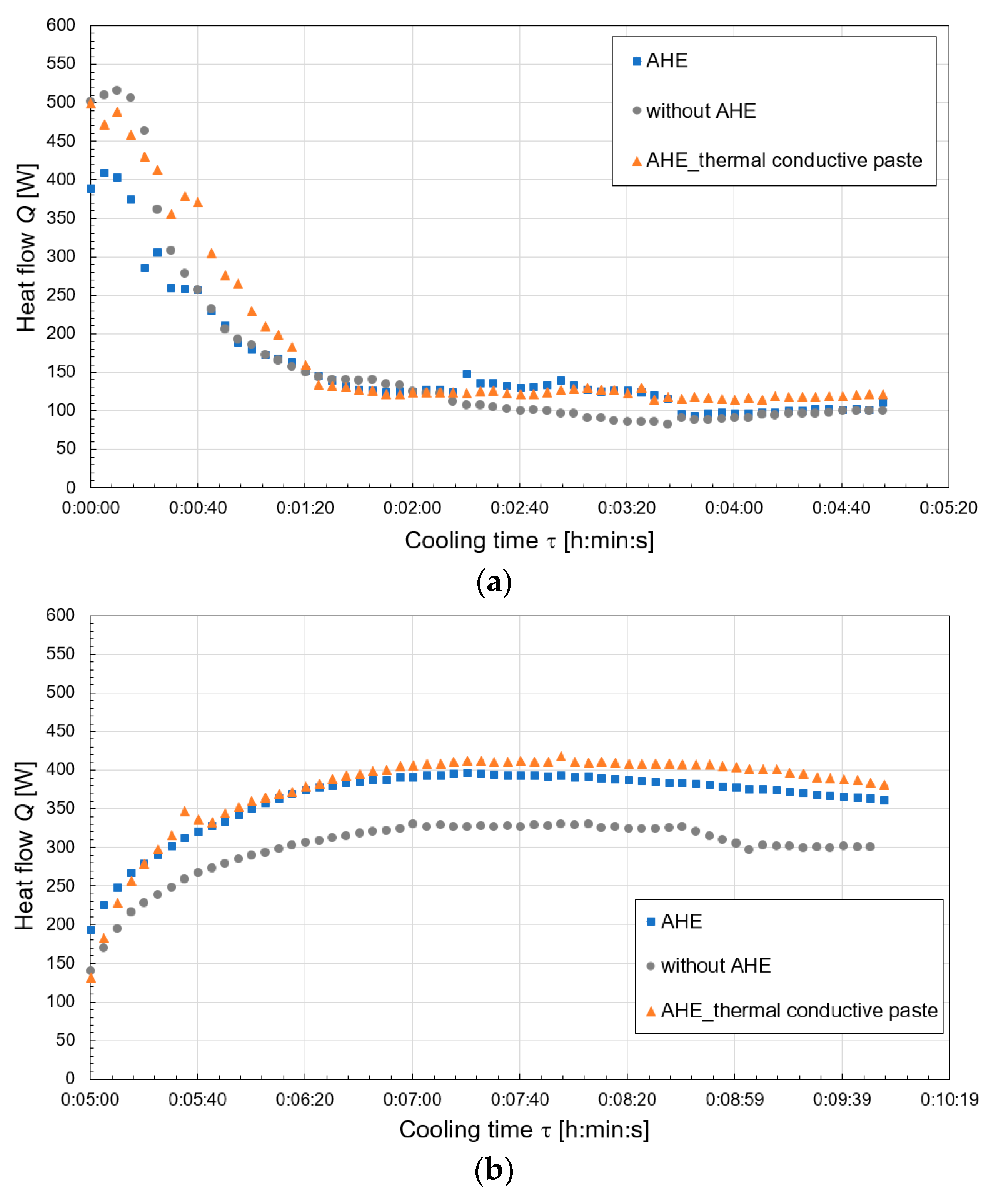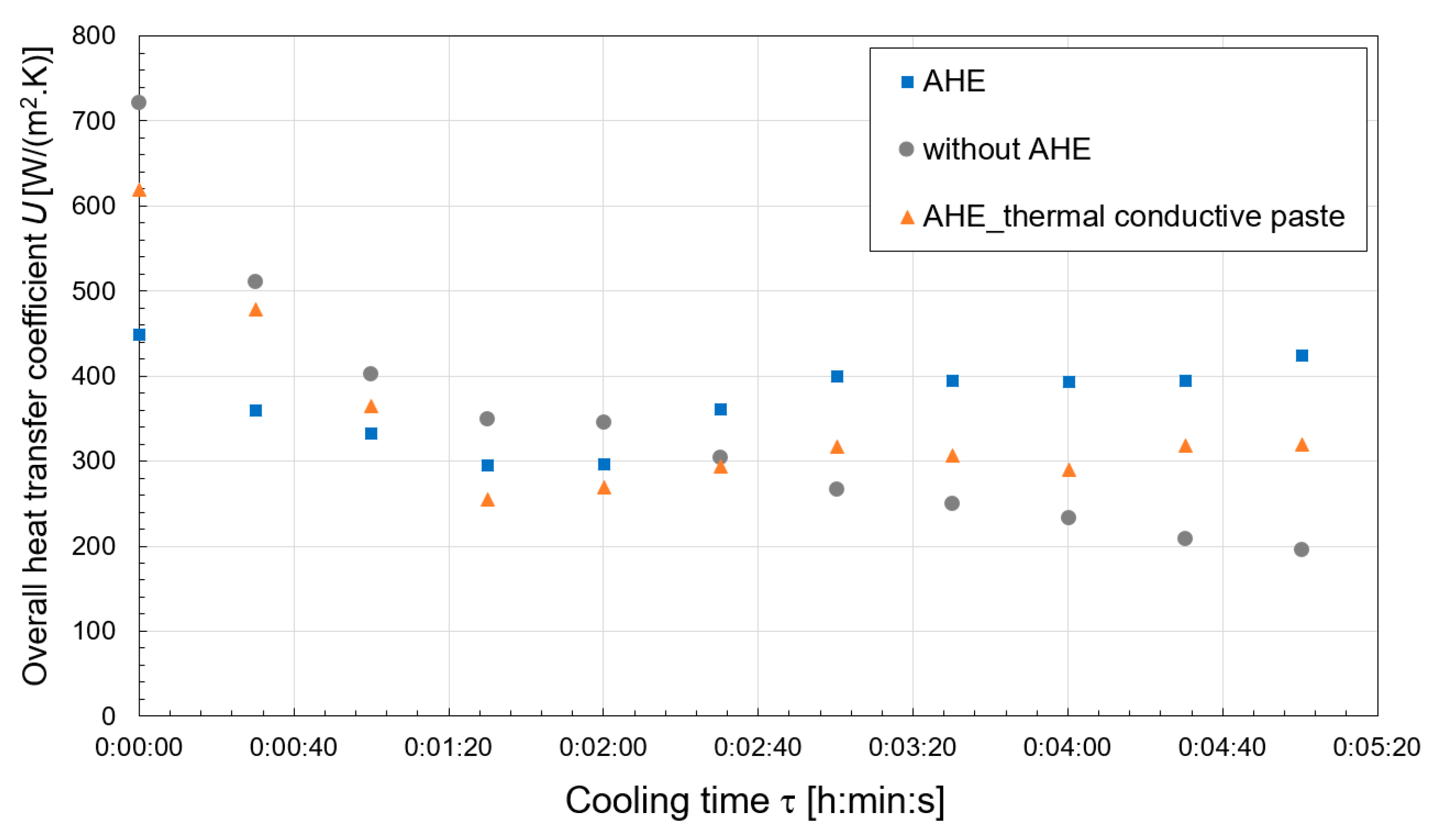1. Introduction
Hydraulic systems are one of the main parts of stationary and mobile machines and aggregates used in the engineering, building and agricultural industries [
1]. Hydraulic circuits are used in assembly procedures, 3D printers, paper mills, and metal processing [
2,
3]. The systems are equipped with a sophisticated control mechanism to perform one or more precision operations to improve the quality of the output product or the quality of the process. Hydraulic oils are used to transfer energy in hydraulic equipment or systems. A closed hydraulic circuit, in which an incompressible fluid flows, generates sufficient working force via a pressure pump, e.g., for the purpose of lifting heavy loads [
4]. Its advantages include the relative simplicity of its mechanisms, and its positioning accuracy with high efficiency and high strength. Precision control valves are also integrated in the hydraulic circuits to control the supply and flow of hydraulic fluid [
5]. To keep the hydraulic fluid (oil) in the required temperature range, oil coolers are fitted to the assemblies [
6]. Viscosity and pressure are important parameters of hydraulic oil (engine or gear oil), and these depend on the actual temperature of the oil, which must be continuously cooled [
7]. Maintenance of the oil at operating temperature has a positive impact on hydraulic system and oil lifecycles, reduced maintenance and repair costs, lower downtime, and higher efficiency [
8]. In addition to the use of oil coolers, overheating problems in the hydraulic system can be prevented by increasing the volume of the hydraulic cartridge, which can cause neglect of the generated temperature. However, such a solution is not suitable for every case, as increasing the volume of the hydraulic tank is usually not possible in terms of space parameters. If so, it is important to choose a suitable position, shape and a suitable size of the connecting metal pipes and hoses because of the direct influence on the temperature of the oil on the circuit. Oil coolers are also an important part of high-performance internal combustion engines. The oil absorbs the heat generated by the movement of the piston inside the cylinder (friction) and dissipates it through the piping and cooler to the surrounding environment. As with hydraulic oil, engine oil performs a few functions, some of which are specific to individual engine parts. These functions include, in addition to heat dissipation, the reduction of friction, wear, detergency, sealing of critical areas, ability to separate water, and many other functions essential for proper engine operation [
9]. There are currently two basic methods of cooling oil coolers that allow the accumulated heat energy to be dissipated into a secondary medium, usually air or liquid [
10,
11]. Air-cooled systems dissipate heat through the air flow. In this case, the onslaught of cold air cools the hot walls of the radiator core. This design brings with it easy maintenance which ensures low operating costs during operation. The main disadvantage of the above embodiment is that the cooling capacity may be significantly affected when the ambient temperature changes. In contrast, water-cooled systems use hot and cold media separated by a wall to dissipate heat. Changes in air temperature have a negligible effect on the cooling capacity, ensuring higher cooling efficiency. The cooler consists of a series of finned tubes through which the hot medium flows [
12,
13]. The coolant absorbs heat from the oil and transfers it away from the radiator, where it is released into the atmosphere.
Externally finned heat exchangers are mostly used to transfer heat from the hot working medium to the ambient air. Improving heat dissipation using finned surfaces has been the subject of research in several published scientific papers. In general, by increasing the heat exchange surface, a more intensive heat transfer from the heated surface to the surrounding air can be achieved [
14,
15]. The geometrical parameters and material of the ribbed surface also play an important role in heat dissipation [
16,
17]. The effects of the fin thickness, fin pitch and fin height on the thermo-hydraulic behaviour of the extended surfaces were studied by [
18,
19]. Helical serrated finned tubes are effectively used in various thermal systems [
20].
The previous literature has minimally investigated the heat dissipation from hydraulic hoses through the aluminium ribbed surfaces into the ambient air. Hydraulic circuits normally consist of an oil cooler but overheating of the operating fluid (oil) still occurs, especially in the summer months and in enclosed systems. The investigated adaptive heat exchanger has a new design and is practically applicable for heat dissipation from hydraulic systems of various industrial machines. The practical benefits of the AHE design include the possibility of mounting on the outer walls of the hydraulic pipes/hoses, thus ensuring an increased heat exchange surface and continuous cooling of the oil during machine operation. The installation of the AHE does not require the interruption of pipelines, during which unwanted aeration of the circuit and leakage of the working fluid would occur. The possibility to lengthen and shorten the length of the AHE using the individual heat exchanger segments brings high variability to different hydraulic systems as required. Adaptability in terms of adjusting the inner diameter of the clamp brings the possibility of application for different diameters of hydraulic pipes. The adaptive heat exchanger is evaluated based on the oil temperatures and surface temperatures on the pipes at the inlet and outlet of the adaptive heat exchanger and heat flow on the oil side. The adaptive heat exchanger mounted in the hydraulic circuit is compared to the system without it. In addition, the adaptive heat exchanger whose contact surfaces are covered with a copper-based thermal conductive paste is compared with the system with and without the adaptive heat exchanger.
2. Materials and Methods
The designed adaptive heat exchanger (AHE) installed in the hydraulic circuit is shown in
Figure 1. The heated working fluid (hydraulic oil) flowing through the hydraulic pipes (1) is cooled by the AHE. The main part of the AHE is a pair of flanges (2, 4) that encircle the outer wall of the pipe. The upper flange (2) is ribbed on the sides and in the centre and ensures continuous heat dissipation from the surface of the AHE. The lower flange (4) without ribbing was enclosed to the upper flange (2) from the opposite side. The fixing of the flanges to the pipe was secured by means of a clamping joint, which was formed after tightening the M6 (3) tightening screws. Due to the length of the hydraulic pipe on which the AHE was mounted, it was also possible to vary the number of heat exchange segments. The individual segments were connected to each other by means of hinges with opposing pins (5), into which brass connecting pins (6) were inserted. When a change in the design length of the AHE was required, the connecting pins (6) must be pushed outwards from the hinges (5). After the flow of the working fluid through the pipeline with the fitted heat exchange segments, the cooled fluid exits further into the hydraulic circuit (to the pump, tank...).
The fluid in the hydraulic circuit was heated continuously during the operation of the machine or equipment to an operating temperature that varied depending on the load. The optimum working temperature of hydraulic oil used in construction machinery is in the range of 40 °C to 70 °C. The optimal operating temperature is 50 °C. When the hydraulic oil is heated above 90 °C, the negative hygroscopic properties of the oil are greatly increased, causing degradation. In addition to oil degradation, most of the polymers contained in hydraulic seals and hoses also degrade (loss of elasticity). The quality of the hydraulic oil and the condition of the cooling system play an important role. The hot oil reduces the efficiency of the hydraulic system and causes leaks (damage to rubber seals, loss of sealing effect), which also reduces the working pressure and causes the oil to heat up more. The chemical reactions that take place in hydraulic oils are oxidation due to the presence of air, and hydrolysis due to the presence of water. For this reason, an important factor is the chemical stability of the oil, which is determined in terms of resistance to the oxidation in which oil molecules and oxygen combine, which also results in a visual change through the oil “darkening” [
21].
Oxidation also results in a change in acidity, viscosity, and the disappearance of additives, causing, for example, a decrease in operating pressure and a change in machine operation [
22]. If the hydraulic oil is continuously subjected to high heat loads, oxidation products are formed in a short time, which stress the pump. If they are not removed (e.g., filling change), these products will start to settle on metal surfaces (pipe walls, tanks) and will build up additional layers of dirt which will restrict the flow of the fluid. According to studies, 70–85% of hydraulic system failures are due to unfavourable oil conditions [
23]. This percentage is mainly made up of soft contaminants and water, i.e., oxidation products of the oil and reaction products of oil additives. A smaller part is made up of hard dirt, which includes, for example, metal, dust, or abrasives.
In the machines and equipment there is lack of assembly space around the individual components. Hydraulic pipes are not only routed in a straight line, but are mostly bent and curved at different angles, or they change their position continuously (e.g., extending the arm of the hydraulic arm with a piston). In the case of metal tubes, due to their direct gripping to the machine skeleton, they do not change their position. This led to the design of a shorter (30 mm) continuously adjustable heat exchanger composed of the required number of cooling elements, given the location and difficulty of installation (
Figure 2). The rotation of the heat exchange segments is ensured by means of hinges with bushings and connecting pins. This design also allows the pipe to change its length during operation due to temperature changes.
The specifications of the hydraulic oil type HL32 produced from highly refined base oils, containing additives that inhibit oxidation and corrosion, are showed in
Table 1.
The hydraulic pipe consisted of a hydraulic rubber hose of ethylene propylene diene monomer rubber material with a thermal conductivity of 0.29 W/(m·K). The adaptive cooler consisted of aluminum with a thermal conductivity of 237 W/(m·K). The oil pump with power of 60 W achieved a hydraulic oil suction capacity of 3 L/min at an operating temperature of 40 °C to 60 °C. The contact surfaces of the hydraulic pipe and the adaptive cooler were covered with a copper-based thermal conductive paste with a thermal conductivity of 3.1 W/(m·K) in the case of the third measurement. The oil temperature at the inlet and outlet of the adaptive cooler Tin, Tout, and the surface temperature of the hydraulic pipe Ts were measured with NTC ZA 9040-FS resistance temperature sensors and a NiCr-Ni FTA 8068 contact sensor. The sensors were connected to an ALMEMO 2590-4S data-logger. The oil flow was measured using the FVA 915 VTH flow sensor.
The heat flow from the hot fluid can be calculated by the equation [
25,
26]:
where
mh—mass flow rate of the hydraulic oil, kg/s,
cp,h—specific heat capacity of the hydraulic oil at constant temperature, J/(kg·K),
Tin,h,
Tout,h—inlet and outlet temperature of hot oil, K. The maximum heat flow uncertainty is 6.5% for the lowest temperature difference between the inlet and outlet of the hydraulic oil passing through the adaptive heat exchanger.
The overall heat transfer coefficient referred to the outer heat transfer surface area of hydraulic pipe can be calculated by the equation [
27]:
where
Aout—outer heat transfer surface area of the hydraulic pipe, m
2, ∆
Tlm—logarithmic mean temperature difference for parallel flow, K.
In general, the machines and equipment are designed to prevent overheating under normal conditions. Overheating is most often caused by a clogged heat exchanger, overheated pump, or restricted flow, but the ambient temperature is also an important factor, reaching close to 40 °C on tropical days. Even though the system operates without malfunction and the fluid is continuously cooled, overheating of the fluid may occur because of these temperatures. The AHE is mounted on the outer walls of the hydraulic pipes for this purpose, thereby increasing the total heat exchange surface and continuously cooling the fluid during the operation of the machine before it enters the pump. To properly position the auxiliary hydraulic oil cooler in the circuit, it is important to identify the main sources of heat to ensure that it is positioned in the most appropriate location for efficient heat dissipation. An example of the AHE installation in a hydraulic circuit is shown in
Figure 3. The experimental hydraulic circuit consisted of several main components connected to each other by the hydraulic pipe (2) with an internal diameter of 16 mm. Hydraulic oil flowed through the hydraulic pipe from the oil reservoir (4). The oil reservoir also housed a heating coil (5), which was used to heat the hydraulic oil to the required temperature. The hot hydraulic oil was sucked by the gear pump (6) from where it flowed through the vane flow meter (11) to the inlet of the AHE (1). As the hot hydraulic oil passed through the AHE, some of the heat was transferred to the ambient air through the finning on the surface of the AHE. The cooled hydraulic oil flowed from the AHE to the oil filter (3), in which impurities were removed from the oil. From the oil filter, the cooled and cleaned oil flowed back into the oil reservoir (4), where it was heated again, and the process was repeated. The 500 W heating coil (5) was powered by an industrial 12 V power supply. The changing temperature of the hydraulic oil inside the pipes was monitored by temperature sensors located at the inlet (9) and the outlet (10) of the AHE. Additionally, the surface temperature of the pipe was monitored by means of a surface temperature sensor (8) which encircled the hydraulic pipe (2). Data from the individual sensors were recorded via a data logger (12).
The heat exchanger can be mounted on different pipe and hose diameters, either straight or curved. The design of the AHE allows it to be installed in the circuit without shutting down or interrupting the integrity. The newly designed heat exchanger differs from the classical concept in that the fluid does not flow directly through its interior. The upper and lower flange encircles the outer wall of the pipes through the enlarged surface area of the finned heat exchanger, removing heat continuously during operation.
3. Results and Discussion
The experimental research was focused on determining the efficiency of heat removal from the hydraulic circuit using a new design type of adaptive heat exchanger (AHE). The distribution of oil temperatures at the inlet and outlet of the AHE during cooling process is shown in
Figure 4. A comparison was realised for hydraulic circuit with AHE, without AHE, and AHE with contact surfaces covered with copper-based thermal conductive paste for the inlet oil temperatures
Tin (
Figure 4a) and outlet oil temperatures
Tout (
Figure 4b). In addition, the effect of oil flow through the hydraulic circuit was also evaluated. Oil circulated in the hydraulic circuit from 0 to 5 min, followed by cooling without forced oil circulation from 5 to 10 min. From the distribution of the inlet and outlet oil temperatures the significance of the AHE used in the circuit can be observed. The inlet oil temperatures for hydraulic circuit without AHE achieved values 1.98% to 6.86% higher compared to a circuit with AHE, and 0.59% to 7.39% higher compared to AHE with copper-based thermal conductive paste. The outlet oil temperatures for hydraulic circuit without AHE achieved values 0.17% to 8.87% higher compared to a circuit with AHE, and 0.74% to 10.78% higher compared to AHE with copper-based thermal conductive paste. The differences between AHE with and without thermal conductive paste were minimal in the range of values 0.14% to 1.75% and 0% to 3.79% for
Tin and
Tout depending on oil flow, respectively. With the oil pump on (0 to 5 min), AHE with thermal conductive paste achieved higher values by 0.14% to 5.63% and 0% to 3.79% for
Tin and
Tout compared to AHE without paste, respectively. However, without forced oil flow (oil pump off) the effect was the opposite; AHE without thermal conductive paste achieved higher values by 0.5% to 1.75% and 0.04% to 2.58% for
Tin and
Tout compared to AHE with paste.
The distributions of temperature difference during the cooling process for oil pump on (
Figure 5a) and oil pump off (
Figure 5b) had a decreasing character from 0 to 5 min and increasing character from 5 to 10 min with cooling time. At the beginning of the cooling process, between 0 min and 1 min 20 s, the process gradually settled to a steady state. From 1 min and 20 s onwards, the temperature differences reached approximately the same values until 5 min, when the oil pump was in operation (
Figure 5a). From
Figure 5a it can be observed that the temperature differences ∆
T in the range of 1.79 °C to 1.09 °C, 1.76 °C to 0.97 °C, and 1.87 °C to 1.35 °C, for the hydraulic circuit with AHE, without AHE, and AHE with thermal conductive paste. In addition, the oil pump generated heat and pressure on the oil by its action, which increased the temperature in the circuit. After switching off the oil pump from 5 to 7 min, a gradual steady-state condition was reached, from which point the temperature differences no longer varied significantly within 10 min. From
Figure 5b a steady state ∆
T can be observed from 7 to 10 min in the range of 4.59 °C to 4.24 °C, 3.88 °C to 3.48 °C, and 4.77 °C to 4.48 °C, for the hydraulic circuit with AHE, without AHE, and AHE with thermal conductive paste.
The non-steady state in the 5 to 7 min time period was caused by inertial flow after pump shutdown and pressure changes in the system. A longer time (more than 5 min) after pump shutdown would result in a gradual equalization of the inlet and outlet temperatures of the AHE. In practice, a circulating flow system is used in which heat increases due to the influence of the hydraulic equipment connected to it.
The heat flow distribution, calculated from the Equation (1), during the cooling process with and without oil flow through the circuit is shown in
Figure 6. The AHE installed in the circuit caused an increase in heat flow of 0.85% to 46.53% compared to the circuit without AHE at forced flow. On average, there was an improvement of 19.79% from the second minute of the cooling process at forced flow. At the same time, the AHE with the thermal conductive paste achieved a higher heat flow by 0.67% to 50.75% and 1.39% to 50.50% compared to the AHE without the thermal conductive paste, and the circuit without the AHE at forced flow. On average, there was an improvement of 24.93% and 20.49% at forced flow (
Figure 6a). Although the hydraulic circuit without oil flow achieved higher heat flow values (
Figure 6b), in practice we cannot consider a hydraulic system without oil flow. The extended heat exchange surface of the AHE ensured a more intensive heat dissipation from the hydraulic pipe surface compared to a system without AHE.
Surface temperatures on the pipes at the inlet and outlet of the AHE,
Ts,in and
Ts,out, are shown in
Figure 7. The temperature differences of the inlet and outlet surface temperatures for the hydraulic circuit without AHE reached low values of 0.5 °C to 1.9 °C. In contrast, installing AHE in the hydraulic circuit resulted in an increase in ∆
Ts to values of 2.3 °C to 8.1 °C. The AHE with thermal conductive paste achieved ∆
Ts in the range of 2.5 °C to 8.3 °C, which represents only a slight increase compared to AHE without thermal conductive paste. From the distribution of the inlet and outlet surface temperatures, it is evident that heat transfer is improved by AHE and AHE with thermal conductive paste compared to the hydraulic circuit without AHE.
The distribution of the overall heat transfer coefficient,
U, calculated according to Equation (2) is shown in
Figure 8. At the beginning of the cooling process, the hydraulic system without AHE achieved the highest value of the overall heat transfer coefficient (
U = 721.66 W/(m
2·K)). In contrast, the hydraulic system with AHE reached the lowest value (
U = 448.31 W/(m
2·K)). With the increase in cooling time, there was a gradual decrease in
U for the hydraulic system without AHE. From the cooling time of 0:03:00, the cooling process can be considered as a steady state, and the hydraulic system with AHE achieved 1.3 times and 2.2 times higher the overall heat transfer coefficient at 0:05:00 compared to the AHE with thermal conductive paste and the system without AHE, respectively.
The practical benefits of the AHE design and research include the possibility of additional heat removal from the hydraulic circuit, which has a wide range of positive effects on the operation of hydraulic systems. The working fluid (oil) is protected from degradation due to increased heat dissipation from the circuit because of the increased heat exchange surface. The AHE can be effectively used in systems where working fluids overheat due to high pressure or friction. Additionally, the oil pump generates heat and pressure on the oil by its action, which increases the temperature in the circuit. In addition, the importance of installing the AHE in the hydraulic circuit increases during the summer season due to the higher ambient air temperatures. The installation of the AHE does not require the interruption of pipelines, during which unwanted aeration of the circuit and leakage of the working fluid would occur. The possibility of lengthening and shortening the length of the AHE using the individual heat exchanger segments brings high variability to different hydraulic systems as required. Adaptability in terms of adjusting the inner diameter of the clamp brings the possibility of application for different diameters of hydraulic pipes.
4. Conclusions
Currently, with high energy prices and energy deficiency, the problems of heat transfer in terms of energy saving, economy of operation, or effective cooling is a very topical issue. Based on the experimental observations of the finned adaptive heat exchanger (AHE) mounted on the pipe of the hydraulic circuit, heat dissipation was enhanced. Covering the contact surfaces of the finned AHE with the copper-based thermal conductive paste resulted in some improvement.
By installing AHE in the hydraulic circuit, the oil temperature decreased compared to the circuit without AHE at a hydraulic oil flow rate of 0.043 kg/s. The application of the copper-based thermal conductive paste on the contact surfaces of the AHE showed a positive effect only after the oil flow was switched off (from 5 to 10 min). In practical applications, hydraulic oil circulating in the circuit at a specific flow rate was mainly considered. The AHE installed in the circuit caused an increase in heat flow Q by an average of 19.79% compared to the circuit without AHE at forced flow. The AHE with the copper-based thermal conductive paste achieved higher heat flow by an average of 24.93% and 20.49% compared to the circuits without AHE and with AHE, respectively. The installation of the AHE and AHE with thermal conductive paste into the hydraulic circuit caused an increase in ∆Ts of up to 8.1 °C and 8.3 °C. In contrast, the ∆Ts value reached a maximum of only 1.9 °C without AHE. A higher temperature difference at the inlet and outlet of the AHE represents a more intensive heat dissipation from the hydraulic system. From the cooling time of 0:03:00, the hydraulic system with AHE achieved 1.3 times and 2.2 times higher the overall heat transfer coefficient at 0:05:00 compared to the AHE with thermal conductive paste and the system without AHE, respectively.
The installation of the finned AHE in the hydraulic circuits provides a series of benefits in terms of operation of the systems, more intensive heat dissipation and thus saving energy and financial costs.

